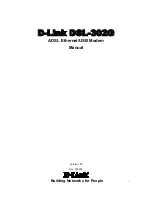
COMMAND RANGING & TELEMETRY UNIT CORTEX
Is.Rev.
Date:
© Safran Data Systems
This document is the property of
Safran Data Systems
.
It cannot be duplicated or distributed without expressed written consent.
Page 186
3.6.12.3.
Code Programming
The PN sequence is defined by the parameter
Code length
(N = 1, 2 or 4). N = 1 for Jet Propulsion Laboratory
(JPL), N = 2 for Weighted-Voting Balanced Tausworthe (T2B), and N = 4 for T4B. The parameter Code length, in
the case of PN Codes Standard, gives a correlation degree between the range clock and the emitted ranging
sequence. The JPL PN code structure is the first structure used in PN codes history. The T2B PN code structure
is used to optimize the integration time. The T4B PN code structure is used to increase the ranging accuracy.
The periodic PN components are:
C1 = +1
–1 (the range clock)
C2 = +1 +1 +1
–1 –1 +1 –1
C3 = +1 +1 +1
–1 –1 –1 +1 –1 +1 +1 –1
C4 = +1 +1 +1 +1
–1 –1 –1 +1 –1 –1 +1 +1 –1 +1 –1
C5 = +1 +1 +1 +1
–1 +1 –1 +1 –1 –1 –1 –1 +1 +1 –1 +1 +1 –1 –1
C6 = +1 +1 +1 +1 +1
–1 +1 –1 +1 +1 –1 –1 +1 +1 –1 –1 +1 –1 +1 –1 –1 –1 –1
The periodic ranging sequence is a combination of PN components:
𝐶
𝑇2𝐵
= 𝑠𝑖𝑔𝑛(2𝐶1 + 𝐶2 – 𝐶3 – 𝐶4 + 𝐶5 – 𝐶6)
𝐶
𝑇4𝐵
= 𝑠𝑖𝑔𝑛(4𝐶1 + 𝐶2 – 𝐶3 – 𝐶4 + 𝐶5 – 𝐶6)
𝐶
𝐽𝑃𝐿
= 𝐶1 𝑂𝑅 ( 𝐶2 𝐴𝑁𝐷 𝐶3 𝐴𝑁𝐷 𝐶4 𝐴𝑁𝐷 𝐶5 𝐴𝑁𝐷 𝐶6)
with length L = 2 x 7 x 11 x 15 x 19 x 23 = 1 009 470 chips
For a given chip rate, the
maximum ambiguity solving
is given by the following formula:
𝑇 =
𝐿
𝐹
𝑐ℎ𝑖𝑝
=
𝐿
2 × 𝐹
𝑇𝑂𝑁𝐸
3.6.12.4.
Shaping Filter
The shaping filter has the following impulse response:
ℎ(𝑡) = {
sin 𝜋𝑡 𝑇
𝑐
⁄ 𝑡 ∈ [0, 𝑇
𝑐
]
0 𝑒𝑙𝑠𝑒𝑤ℎ𝑒𝑟𝑒
















































